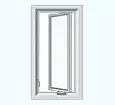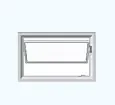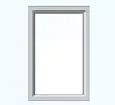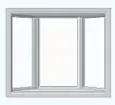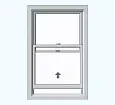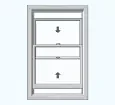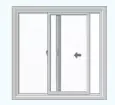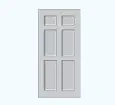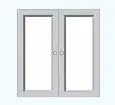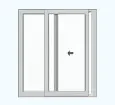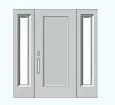Windows play a crucial role in your home’s functionality, aesthetic appeal, and energy efficiency. Whether you’re building a new house or upgrading your current one, choosing the right windows can significantly affect your comfort, utility bills, and overall home value. With so many options on the market, it’s essential to consider a few key factors before making your decision.
In this guide, we’ll walk you through the most important aspects to consider when selecting windows for your home.
1. Consider Your Home’s Architectural Style
The first thing to keep in mind when choosing windows is the architectural style of your home. Windows that complement your home’s design will enhance its aesthetic appeal and maintain its structural integrity. Here are a few window styles that work well with specific types of homes:
• Modern Homes: Large, minimalistic picture windows or sleek casement windows are often used to create an open, airy feel with uninterrupted views.
• Colonial or Traditional Homes: Double-hung windows with divided panes or grids work best to capture the charm and elegance of a more classic design.
• Victorian Homes: Specialty windows like bay or bow windows are commonly used to highlight the intricate and ornate details of a Victorian-style home.
• Cottage or Farmhouse: Awning or casement windows with grilles and a rustic finish add to the cozy, countryside aesthetic.
Matching your window selection to the architectural style of your home helps preserve its charm and makes the overall design more cohesive.
2. Focus on Energy Efficiency
Energy-efficient windows are a smart investment, helping you save money on heating and cooling costs while reducing your carbon footprint. When shopping for windows, look for features that enhance energy efficiency:
• Double or Triple Glazing: Multi-pane windows with double or triple glazing trap a layer of gas (usually argon or krypton) between the panes, acting as insulation to reduce heat transfer.
• Low-E Coatings: Low-emissivity (Low-E) coatings on the glass help reflect infrared heat back into your home during the winter and keep it out during the summer, contributing to better temperature control.
• U-Factor and SHGC: The U-factor measures how well a window insulates, while the Solar Heat Gain Coefficient (SHGC) measures how well it blocks heat from the sun. Look for windows with lower U-factors and SHGC ratings for optimal energy performance.
• ENERGY STAR Certification: Windows with an ENERGY STAR rating meet rigorous energy efficiency guidelines, ensuring you get the most efficient products on the market.
Choosing energy-efficient windows can reduce your utility bills and make your home more comfortable year-round.
3. Choose the Right Frame Material
The material of your window frame affects its durability, maintenance requirements, energy efficiency, and cost. There are several options to choose from, each with its own advantages:
• Vinyl: Affordable and low-maintenance, vinyl windows are highly energy-efficient due to their excellent insulation properties. They resist moisture and won’t warp, peel, or fade, making them ideal for a long-lasting solution.
• Wood: Wood frames offer a classic, elegant look that suits traditional homes. They provide good insulation but require more maintenance than other materials since they can be prone to rot, warping, and insect damage.
• Aluminum: Known for their strength and durability, aluminum frames are slim and allow for larger panes of glass, ideal for modern designs. However, they conduct heat more readily, making them less energy-efficient without a thermal break.
• Fiberglass: Fiberglass windows are strong, durable, and highly resistant to temperature changes, making them an excellent choice for energy efficiency. They require little maintenance but tend to be more expensive than vinyl or aluminum.
When selecting a frame material, consider the climate in your area, your budget, and how much maintenance you’re willing to perform.
4. Select the Best Style for Your Needs
Different window styles offer varying functionality, ventilation, and views. Here’s a breakdown of the most popular window styles and their unique advantages:
• Double-Hung Windows: Both the top and bottom sashes of double-hung windows can be opened, allowing for improved ventilation and easy cleaning from inside the home.
• Casement Windows: Hinged on the side and opening outward like a door, casement windows provide excellent ventilation and seal tightly for energy efficiency.
• Awning Windows: These windows are hinged at the top and open outward from the bottom, allowing you to keep them open even during light rain while providing ventilation.
• Slider Windows: Sliding horizontally along a track, slider windows are easy to operate and provide wide, unobstructed views.
• Bay and Bow Windows: These protrude from the home’s exterior, creating a cozy nook inside and enhancing your home’s curb appeal. They offer panoramic views and allow for extra natural light.
• Picture Windows: Large, fixed windows that don’t open, picture windows offer expansive views and bring in natural light, making them perfect for rooms where ventilation isn’t needed.
Think about how you use the space around your windows. For example, rooms that need a lot of fresh air might benefit from casement or double-hung windows, while a living room with a scenic view might look better with a large picture window.
5. Pay Attention to Ventilation and Natural Light
Windows aren’t just for aesthetics—they also contribute to a home’s ventilation and natural lighting. The placement, style, and size of windows should help achieve the right balance:
• Ventilation: Rooms like kitchens and bathrooms often need more ventilation to remove moisture and odors, so casement, awning, or double-hung windows work best in these spaces.
• Natural Light: For spaces like living rooms or bedrooms, large windows like picture or bay windows are great for bringing in sunlight and creating a sense of openness.
When choosing windows, think about how much airflow and natural light each room in your home requires, ensuring both comfort and energy efficiency.
6. Don’t Forget About Security and Safety
Security is another key factor when choosing windows. Look for windows with strong locking mechanisms and consider additional features like laminated or tempered glass for added safety and durability.
• Laminated Glass: This type of glass has a layer of plastic between two glass panes, making it much harder to break and improving security.
• Tempered Glass: Tempered glass is stronger than regular glass and shatters into small, blunt pieces if broken, reducing the risk of injury.
Especially for ground-floor windows or windows in easily accessible locations, investing in security features is important to protect your home.
Conclusion
Choosing the right windows for your home involves more than just picking a style that looks good. By considering factors like your home’s architecture, energy efficiency, frame material, functionality, and security, you can select windows that enhance both the beauty and comfort of your home. Take your time, research the options available, and consult with window professionals to ensure you make the best decision for your space.
Upgrading your windows is a long-term investment that can improve your home’s value, energy efficiency, and curb appeal for years to come.

